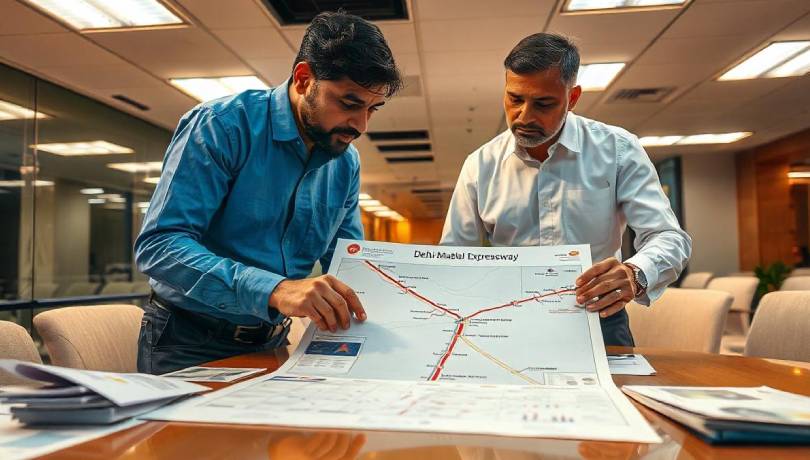How Delhi – Mumbai Expressway is supporting the real estate growth?
Delhi-Mumbai Expressway (DME)
- Overview: The Delhi-Mumbai Expressway (DME) is a high-speed, six-lane expressway that will connect Delhi and Mumbai, two of India’s largest metropolitan cities. Spanning 1,386 km, the expressway will reduce travel time between Delhi and Mumbai from around 24 hours to just 12 hours. The project, being developed under the Bharatmala Pariyojana, is one of the most significant infrastructure projects in India, with multiple phases and stretches already under construction.
- Impact on Real Estate:
- Improved Connectivity Between Major Economic Hubs: The expressway will connect the country’s two most prominent business and commercial hubs — Delhi and Mumbai. As it passes through multiple states, including Rajasthan, Gujarat, and Madhya Pradesh, it will enhance accessibility to key cities along the route, leading to significant growth in real estate demand across these regions. Major cities like Jaipur, Udaipur, Vadodara, Surat, and Vadodara will experience increased connectivity to the economic corridors.
- Development of New Growth Corridors: The expressway will unlock new growth corridors, particularly in Tier 2 and Tier 3 cities along the route. Areas around towns like Neemrana (Rajasthan), Aligarh (Uttar Pradesh), and Kota (Rajasthan), which were previously not major real estate hotspots, will now attract significant interest for residential, commercial, and industrial development. Gujarat’s industrial hubs like Vadodara, Surat, and Bharuch will benefit from improved access to both Delhi and Mumbai, resulting in higher demand for real estate.
- Boost to Logistics and Industrial Real Estate: The expressway will open up several towns and cities along the way to industries and logistics companies that need efficient transportation links between Delhi and Mumbai, two of the largest commercial centers in India. This will result in an increase in the demand for logistics parks, warehouses, and manufacturing units along the expressway, leading to growth in industrial real estate.
- Growth in Housing Demand: As travel time between Delhi and Mumbai decreases, areas along the expressway will become more attractive for residential developments. Both cities are already facing significant housing demand due to high population growth, and improved connectivity will drive real estate growth in smaller cities, where demand for affordable housing and gated communities will rise. Towns like Surat, Vadodara, and Kota will see an increase in residential projects, catering to middle-class buyers.
- Increased Property Values: The enhanced connectivity provided by the Delhi-Mumbai Expressway will naturally lead to an increase in property values in towns along the route. As industrial, commercial, and residential developments are triggered by the expressway, areas that were previously undervalued are expected to see appreciation in property prices. The influx of businesses, workers, and residents will make these areas more desirable and financially lucrative for investors.
- Tourism and Hospitality Real Estate: Along with improving business connections, the Delhi-Mumbai Expressway will also enhance tourism between the two cities, with towns like Neemrana, Ajmer, and Surat becoming new tourist hubs. This will likely drive the demand for hospitality real estate, including hotels, resorts, and restaurants, creating new opportunities for hospitality investors.
Conclusion for Delhi-Mumbai Expressway:
The Delhi-Mumbai Expressway is poised to significantly transform the real estate landscape in the regions it connects. By reducing travel time between two of India’s most economically important cities, the expressway will foster the development of new residential, commercial, and industrial real estate hubs. Areas along the expressway will see improved infrastructure, better connectivity, and rising property values, making them attractive investment destinations for both developers and investors.

